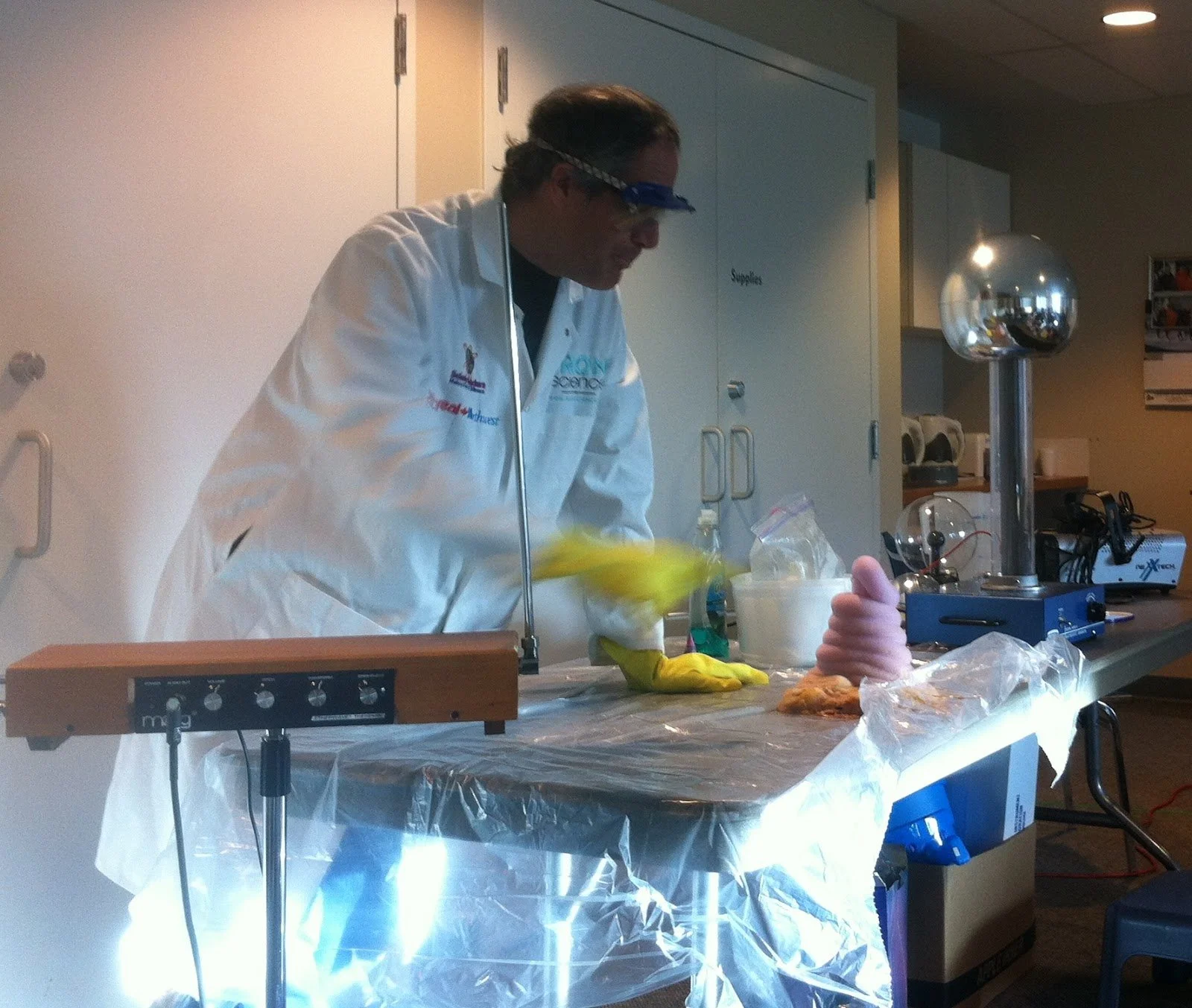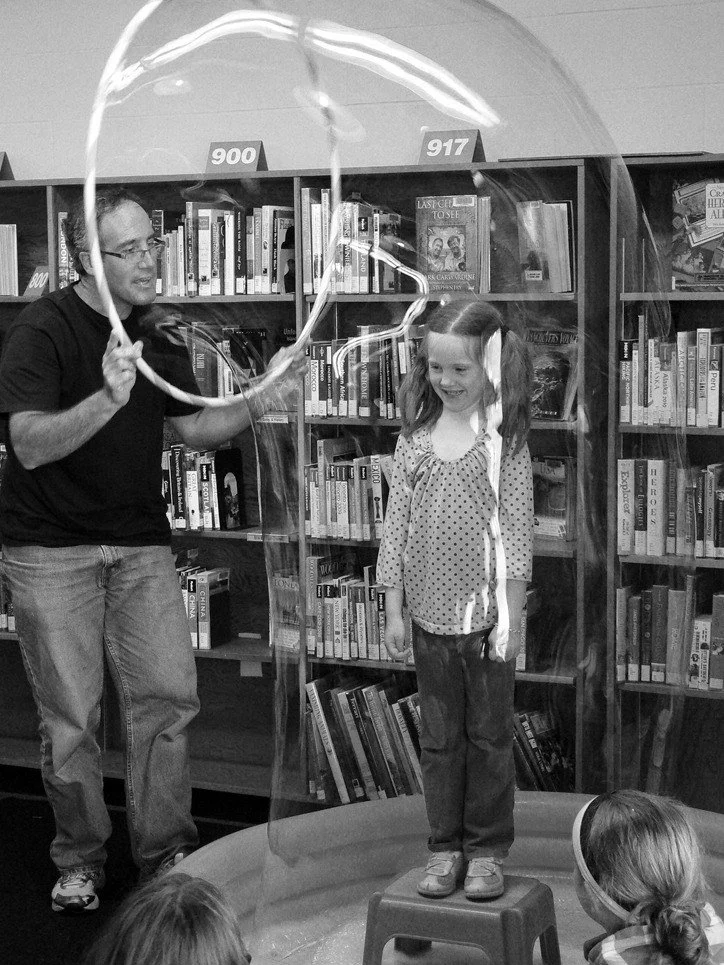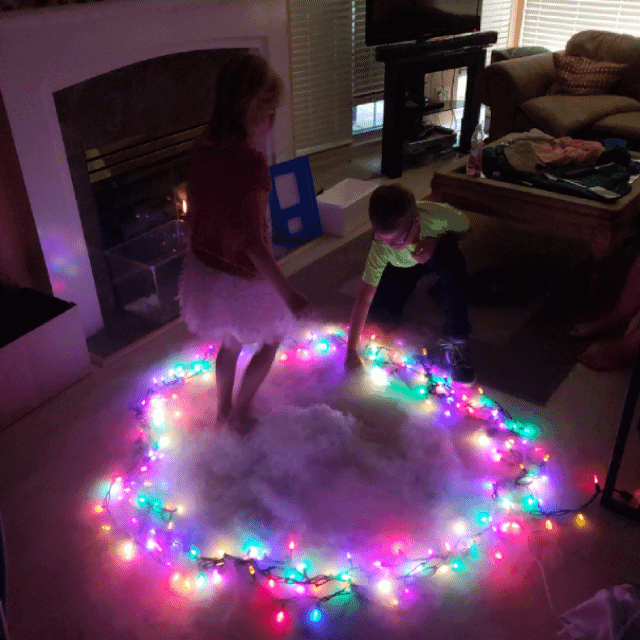
As a student who found school boring, my first priority is to do whatever I can to make the learning both fun and motivating.
Some boring teachers would tell you this is the wrong approach.
Many people think that kids just need to hunker down and do a bunch of work, but what this hunker down approach does not take into account is that children are individuals and every child learns differently.
-
For one student that I tutored in French, I created a (family-friendly) Cards Against Humanity game by translating all the cards into French. For many home learners, I’ve created Rube Goldberg Devices that tested their problem-solving skills and made learning physics concepts both fun and challenging.
-
Tutoring a student one on one allows me to get to know my students well. I will adjust to help fill a student’s learning gaps.
For example, I once paused in a lesson to factor polynomials when I realized they did not understand multiplication and division at even a basic level.
By getting to know the student and learning what they needed most, I was able to help them understand the skill on a fundamental level.
Factoring polynomials ended up becoming easier for the student, when I dropped the focus on the next test and helped them with essential concepts that they had not learned earlier in their schooling.
My approach takes into account many factors: kids’ specific needs, learning challenges, interests, sense of humour, and much more. ☺
So, I teach
-
My approach to writing depends entirely on the age level, the situation, and what is needed. A teenage ESL student might need to focus on structure, grammar, and punctuation while home learners might be working on creative writing and need exercises to challenge them to break out of their usual writing patterns.
Five to eight year olds might need help understanding the structure of sentences and how to write a concise, coherent story.
But what happens in common for all these ages and situations is I give the kids fun and humorous writing projects that will be enjoyable and help them learn to love expressing themselves with words.
One of my favourite projects is writing a response plan to protect their homes from an invasion of weird monsters such as TINY ZOMBIE GIRL GUIDES or INEXPLICABLY ADORABLE VAMPIRE LIBRARIANS. In my experience, even students who dislike writing can't resist this ridiculous writing project.
-
Mathematics can be very challenging for students especially if they believe that it is a subject they have trouble with. My approach to math takes their concerns and fears about math into account. I find ways to gamify the concepts¹ so that the students are enjoying themselves and highly motivated to answer the questions in order to win the game.
In my three decades of tutoring, I have noticed that kids will do three times as many questions in a short time if they are playing a game, but if they are doing a worksheet, the motivation just isn't there and they plod through the task. Once a student's confidence has increased, I start introducing them to new math concepts their teacher has not covered yet. When they come up later in class, the student I tutor has a head start.
¹ If possible. Grade 11 trigonometry isn't very easy to gamify.
-
My approach to reading depends very much on the child, their interests, and what stage they are at. A young student just beginning to read will be taught using a variety of fun games and activities. These games include approaches like phonics and whole language. Fun, reading level-appropriate books are provided as well.
Knowing a child's interests is key in reading instruction as it's important to have material that is age-appropriate and fun. If kids have a diagnosed learning disability, I will need to read the reports and choose the best approach based on professional recommendations and the most recent research.
I also liaise with the teacher (if they are willing) and focus on the skills the teacher needs most. The advantage of a tutor is being able to provide patient, one on one instruction in a comfortable setting.
-
Teaching STEAM is exciting because students get to design, prototype, test, and build projects. This is the best type of learning in my opinion.
There are too many different types of projects that fall under the umbrella of STEAM, but suffice it to say that kids love STEAM and I love teaching it.
Virtual reality is probably the most incredible way to learn. Never mind the fact that you can snorkel the great barrier reef, create 3D artwork, go snowboarding, climb to the top of Everest, tour Angkor Wat, compose music and you can do all this while standing in your living room wearing pajamas.But the best feature is CREATING WORLDS! There are many apps that allow students to learn basic 3D modelling techniques and then go on to create habitats, cities, alien landscapes, and so much more. Of course, you can also create games that go along with these exotic worlds you have created.
-
I teach coding at a basic level. As a grade one teacher, I introduced my students to coding by creating coding block cards and letting the kids string the cards together to make programs. I would then become the 'robot' and follow their programs demonstrating how a computer follows each command in a literal fashion.
It was usually terrible for me when the kids realized they could put the JUMP or DANCE command in a forever loop and watch me repeat these actions until I could no longer stand up. When they created programs with coding errors, it was obvious to them why their program did not work.
Later when they had errors in Scratch, they automatically understood that the problem was with their code and they found it easier to understand the issue and debug the program.
For older students who do not need the fundamentals, I take a creative approach that requires them to understand the user interface of Scratch or Code.org and to understand the commands. Then I let them create programs using their vivid imaginations. I do not make everyone painstakingly write the same program.
Pixel Art Glenn
My Experience
Certified Teacher in BC, Canada Since 1996
-
My public and independent school teaching experience includes eighteen years of work: first, as an educational assistant for two years, and the remainder as a teacher.
I have worked for The Winnipeg School Division (#1), the Saanich School District (#63), The Vancouver School Board (#39) and the Surrey School District (#36). My teaching positions included substitute teaching, French as a Second Language, and of course, a classroom teacher (usually grades 1-3).
I have also worked extensively with home schooled students in person and in online classes.
-
Throughout my career, I have been an early adopter of technology that could be used to increase my students' motivation and augment their learning experience. I will continue to push the boundaries of educational technology. I stay up to date by attending professional development seminars and often teach seminars myself, particularly in the areas of science instruction and technologies such as robotics and virtual reality.
-
My overseas teaching experience includes three years of work at New Ramses College in Cairo, Egypt as the Head of the Science Department (مشرف العلوم), one year teaching grade three at the American School Foundation of Chiapas in Tuxtla Gutiérrez, Chiapas, Mexico and a brief stint teaching English at Škola Horáčkova in Prague, Czech Republic while backpacking through Europe.
-
Students with learning disabilities often have the odds stacked against them especially in group settings such as a large classroom.
As a former educational assistant and someone who struggled to learn at times, I have compassion, empathy, and patience for students with learning challenges whether or not they have been diagnosed.
I have a lot of experience working with children who have ADHD or are on the autism spectrum. My instruction takes into account the assessments, diagnosis, and reports, as well as working with the parents and teachers.
-
An amazing learning experience I had was being a volunteer naturalist at the Swan Lake Christmas Hill Nature Sanctuary for five years. I learned from incredible biologist educators and had the chance to teach a variety of outdoor education programs.
Other volunteer experiences include: a monthly recycling depot, three years at New Ramses College and helping at an orphanage in Cairo, Egypt.
If you went back in time…
… to Lansdowne School, Andrew Mynarski School or Sisler High School in Winnipeg to see me as a student, you might not find what you would expect. I hated school and rarely lived up my expectations, especially once I made it to junior high school. The irony that I became a teacher has never been lost on me.
































